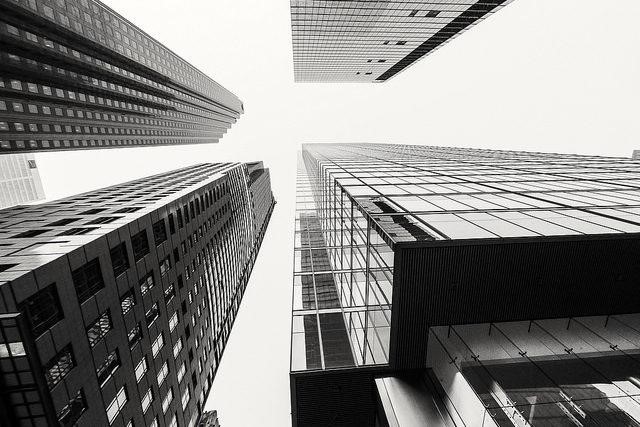
High-rise buildings, known for their slender and tall structures, are particularly sensitive to vibrations caused by environmental factors such as wind and seismic activities. Detecting and analyzing these vibrations is crucial for ensuring structural integrity and safety.
Challenges in High-Rise Structures
The architectural symmetry of high-rise buildings often results in closely spaced modes with similar natural frequencies but different mode shapes. This complexity necessitates advanced techniques for accurate vibration analysis.
Proactive Measures for Risk Mitigation
When unusual or excessive vibrations are detected, engineers can take immediate corrective action to prevent potential structural damage. This may include reinforcing weak areas or adjusting mechanical systems to reduce vibration intensity. The ability to detect vibrations early allows for timely intervention, minimizing long-term risks to the building and its occupants.
Impact on Occupant Well-being and Building Functionality
Excessive vibration not only impacts the structural health of a building but also affects the comfort and well-being of its occupants. Vibrations can cause noise, rattling, or even feelings of instability, which can lead to discomfort or stress for residents or employees. In the case of highly sensitive environments like laboratories or data centers, even minor vibrations can interfere with equipment functionality. Therefore, keeping vibration levels within safe limits is essential for maintaining both operational efficiency and occupant satisfaction.
Modal Analysis
Modal Analysis involves assessing the dynamic response of structures to identify their natural frequencies, mode shapes, and damping ratios. Tools like ARTeMIS Modal Pro are employed for such measurements, enabling detailed analysis of the building’s dynamic properties. For instance, the Heritage Court Tower in Vancouver utilized ARTeMIS Modal Pro to conduct comprehensive vibration analysis.
Importance for Building Integrity and Occupant Comfort
Detecting and analyzing vibrations is not just about structural safety; it also plays a significant role in the comfort of the building’s occupants. Excessive vibrations can lead to discomfort, noise, and even psychological effects on residents. By continuously monitoring these movements, building managers ensure that both safety standards and comfort levels are maintained.
Continuous Structural Health Monitoring (SHM)
Long-term health monitoring of high-rise buildings is essential as their structural health can deteriorate over time due to various factors. Continuous SHM systems, such as ARTeMIS-SHM, provide real-time data on structural performance, allowing for early detection of potential issues and timely maintenance.
Drift Analysis
Interstorey drift, the relative horizontal displacement between floors, is a critical parameter in assessing building performance during events like earthquakes. Drift Analysis modules measure the drift ratios, alerting users when these exceed safe thresholds. An example includes the drift analysis of a 54-storey building during the 1994 Northridge Earthquake, which highlighted areas needing attention through triggered alerts.
Technologies for Vibration Detection
To monitor vibrations in high-rise buildings, engineers use a variety of advanced technologies like accelerometers and laser vibrometers. These devices are strategically installed at key points in the building, allowing real-time monitoring of vibration patterns. Data from these sensors is analyzed using computational models to identify any unusual activity, enabling engineers to assess the building’s structural health.
Methods of Vibration Detection
Incorporating state-of-the-art technologies is crucial for effective vibration monitoring. Some of the most commonly used tools include accelerometers, which measure the rate of change in velocity, and strain gauges that record stress on the structure. Additionally, fiber-optic sensors and wireless networks provide accurate, real-time data that allow engineers to map the building’s response to both environmental and internal factors. These systems can detect even the slightest movements, which helps in predicting potential risks.
Benefits of Vibration Analysis
- Enhanced Safety: Early detection of structural issues prevents catastrophic failures.
- Longevity: Regular monitoring extends the building’s lifespan by addressing wear and tear proactively.
- Regulatory Compliance: Ensures buildings meet safety standards and regulations.
Role of Vibration Analysis in Building Maintenance
Vibration analysis is a critical tool for proactive building maintenance. When vibrations exceed acceptable levels, they can weaken structural components, eventually leading to cracks or deformation. Regular vibration monitoring helps engineers identify stress points and areas that may require reinforcement. It also aids in extending the lifespan of a building by ensuring that all structural elements remain within safe operational limits.
Future Implications
Detecting and analyzing vibrations in high-rise buildings using advanced tools and continuous monitoring systems is imperative for maintaining structural health and safety. Implementing these technologies helps in mitigating risks and ensuring the longevity and stability of high-rise structures. For more detailed insights and case studies, you can visit Structural Vibration Solutions.
